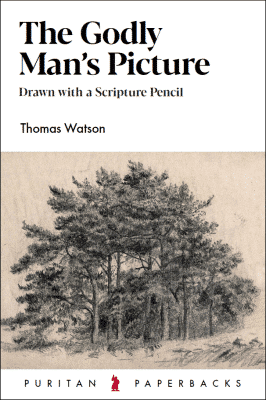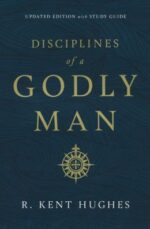save
$1.25The Godly Man’s Picture (Thomas Watson) (#20)
$9.75$11.00
The ways in which Watson illustrates the traits of a godly man truly is like an artist painting pictures: the reader will feel as if he is with a master illustrator, as Watson was perhaps the most skilled Puritan writer and preacher of all, at drawing memorable illustrations with his words. His skillfulness at this reminds one of the way in which the Lord Jesus taught with parables.
In stock
The Godly Man’s Picture
Drawn with a Scripture Pencil, or Some Characteristic Marks of a Man who is Going to Heaven
The pages which follow thoroughly, but very simply, portray those marks.
The ways in which Watson illustrates these traits of a godly man truly is like an artist painting pictures: the reader will feel as if he is with a master illustrator, as Watson was perhaps the most skilled Puritan writer and preacher of all, at drawing memorable illustrations with his words. His skillfulness at this reminds one of the way in which the Lord Jesus taught with parables.
Few preachers in the Puritan era (or any other period of church history) match Thomas Watson for his ability to combine rich spirituality, nourishing doctrine and sane wisdom with fascinating illustration and a pleasant style. Watson is remembered chiefly for his posthumously published Body of Practical Divinity (reprinted by the Trust in three volumes). But his extant sermons also include this marvellous series on the character of the Christian – The Godly Man’s Picture. It is, as C.H. Spurgeon said of his other work, ‘a happy union of sound doctrine, heart-searching experience and practical wisdom’.
Watson is always the essence of sanity and reliability. But in addition, this work shows how attractive the grace of God is. Christians of all stages, reading it for the first time, will feel as if they have entered the gallery of a great portrait painter. As his sub-title suggests, Watson works with ‘a Scripture pencil’ in this priceless sketch of the true believer.
Some of the marks Watson draws for us in the life of a godly man are:
- A man of knowledge
- fired by love
- serving God and not men
- love for the Word
- humility
- A man of prayer
- zealous
- patient
- A man who prizes Christ
- A man who weeps
- A thankful man
— and many more
About the Author
Thomas Watson (1620-1686) was rejected from his pastorate with the Act of Uniformity in 1662. He continued to preach in private whenever he had the opportunity. In 1666, after the Great Fire of London, Watson prepared a large room for public worship, welcoming anyone who wished to attend. After the Declaration of Indulgence took effect in 1672, Watson obtained a license for Crosby Hall, Bishopsgate, which belonged to Sir John Langham, a patron of nonconformists. Watson preached there for three years before Stephen Charnock joined him. They ministered together until Charnock’s death in 1680.
Watson kept working until his health failed. He then retired to Barnston, in Essex, where he died suddenly in 1686 while engaged in private prayer. He is buried in the same grave as his father-in-law who served as a minister at Barnston. Watson’s works – several of which have been republished by the Trust – are a legacy that have continued to be a blessing to those who love sound, heart-searching exposition of the Scriptures.
Table of Contents
- “For this shall every one that is godly pray unto Thee”
- Expounding the Nature of Godliness
- A Reproof to Such as are Only Pretenders to Godliness
- Showing the Characteristics of a Godly Man
- Two Conclusions About the Characteristics of a Godly Man
- An Exhortation to Godliness
- Prescribing Some Help to Godliness
- An Exhortation to Persevere in Godliness
- Motives to Persevere in Godliness
- Counsel for the Godly
- Comfort to the Godly
- Showing the Mystic Union between Christ and the Saints









